Hunger Pains: Black College Students Struggle with Food Insecurity
The story was co-published with The Sacramento Observer as part of the 2024 Ethnic Media Collaborative, Healing California.
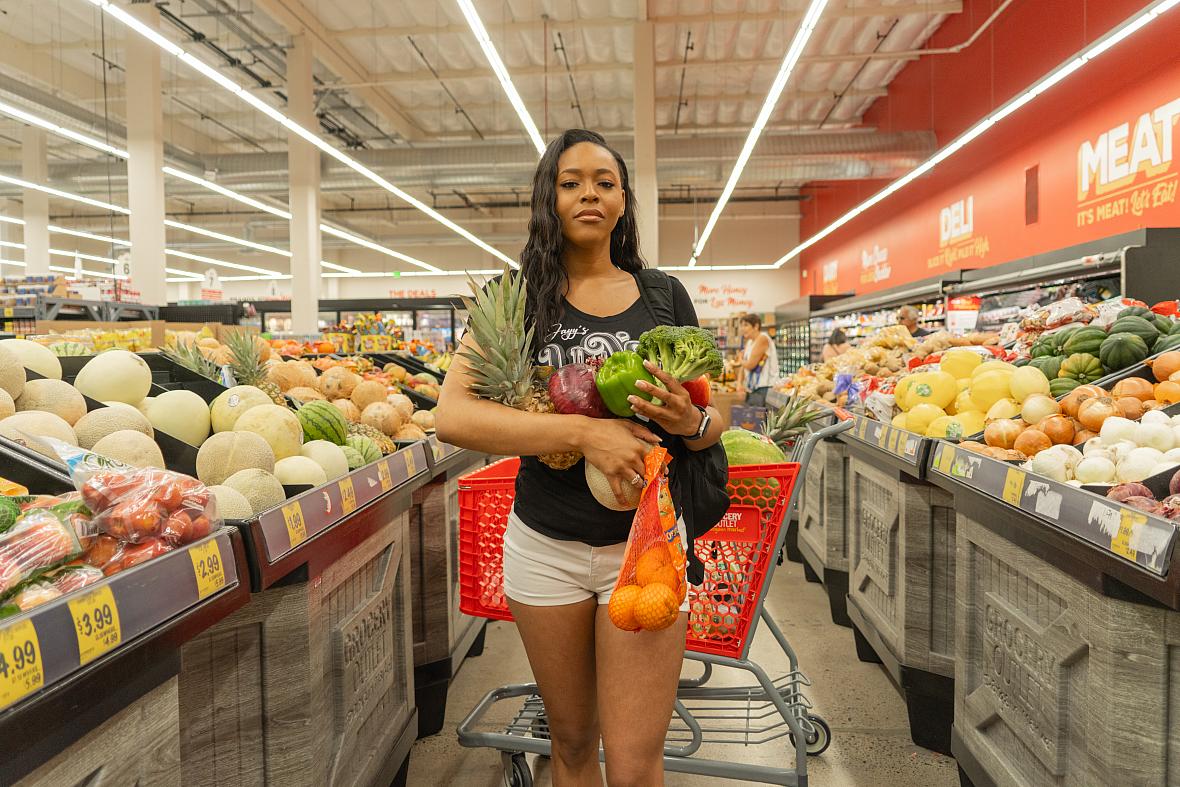
Sacramento State junior Jaliyah Dramera, 29, is among the millions of students across the country facing food insecurity. Dramera is shopping with greater ease these days as a participant in a pilot guaranteed income program for former foster youth.
Photo by Roberta Alvarado
Giving up meat was a lifestyle choice that helped Jaliyah Dramera feel better mentally and physically.
As a dancer and instructor, she puts high demands on her body and needs for it to perform at an optimum level.
Recently, she’s lapsed in her strict vegan diet. Not because of temptation or a lack of willpower. The reality is, she doesn’t always have enough money to buy the foods necessary to fuel herself properly.
College students like Dramera, who attends Sacramento State, are facing food insecurity at alarming rates. A 2023 Food and Housing Survey by the California Student Aid Commission found that more than two-thirds of the 23,687 college students polled reported that they lacked sufficient access to food. Executive Director Marlene L. Garcia says the shocking results are proof of a basic needs crisis across all segments of higher education.
“These and other findings tell a story of higher education dreams becoming even harder to realize, especially for students who face disproportionate barriers to reaching those dreams,” Garcia says. “Students are struggling with housing and food insecurity at alarming rates and the students most likely to experience housing and food insecurity were female, low-income, African American, Latinx and older students working to pay for school and often while parenting.”
As many make the painful choice between food and other expenses, campuses are forced to expand student retention efforts and address the issue. Schools have created food pantries and hold regular giveaways to aid students who already are stretching things to cover tuition, books, housing, and gas.
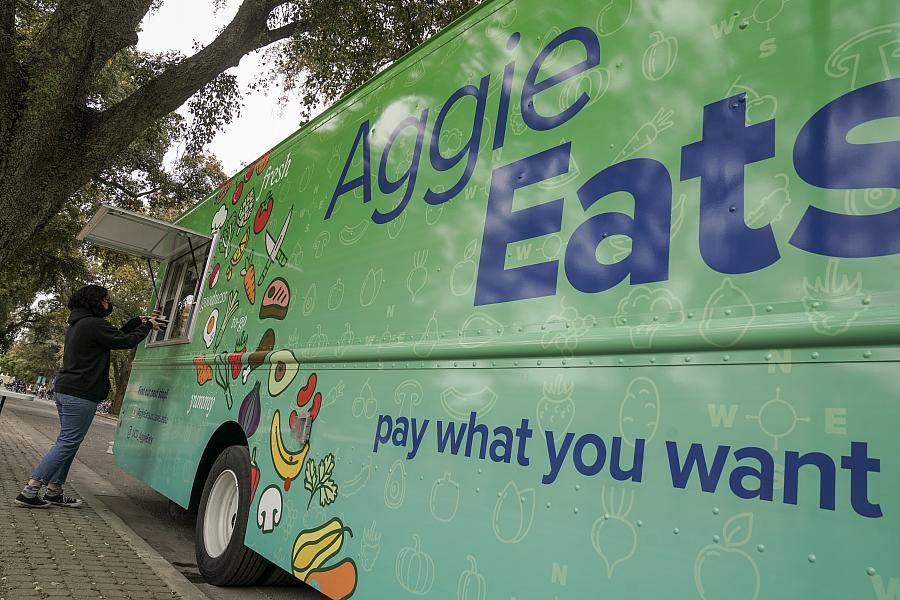
The AggieEats truck provides free daily meals to UC Davis students when classes are in session.
Photo: Julia Ann Easley/UC Davis
Locally, UC Davis rolls out its AggieEats food truck. Believed to be the first college in the country to have such a vehicle, it allows students to pay what they want for menu items, even if that amount is zero. The truck is equipped to serve up to 500 meals a day.
UC Davis also has a program called AggieFresh, which, similar to CalFresh (food stamps), provides eligible students with a credit card for food purchases at grocery stores, markets, and restaurants where Visa is accepted.
At Sacramento City College, a Basic Needs Center offers bimonthly food distribution through its Panther Cares Program. There are also classes in nutrition and money management. Students who complete the course receive $100 gift cards.
Making A ‘Way’
At Sacramento State, which boasts more Black enrollment than any other university in the CSU system, leaders are taking efforts to another level. The university has partnered with the United Way California Capital Region for a collegiate version of its guaranteed income program.
Funded by the organization’s philanthropic network, Women United, the program will provide 10 women with $500 a month for a year. The students are part of the university’s Guardian Scholars Program for former foster youth.
For the president of Sacramento State, Dr. Luke Wood, himself a former foster youth, and the local United Way president, Dr. Dawnté Early, the program has deep personal meaning.
Dr. Wood says the $6,000 will give participating students a sense of financial freedom that is “empowering and transformative.”
“I had my son at 19,” Dr. Early said. “I had many, many services and I was very, very fortunate to also have my family there, when I fell and when I had adversity, to lean on them. To be able to give that same support that I had when I was in college, just feels really, really good.”
Dramera, a 29-year-old junior who transferred from American River College, struggled before being adopted at age 8.
“Prior to that I did live in a few foster homes with my little brother where some people would steal our food or our snacks, or we weren’t able to get seconds. Things like that,” Dramera recalls. “Sometimes we would go to bed hungry if there wasn’t enough for everybody. After I was adopted, I didn’t have that issue.”
Living on her own, Dramera started having difficulty paying for food while attending community college and again shortly before the start of the fall 2023 semester at Sac State. She took on a second job, ironically making grocery deliveries through Amazon Flex. Her earnings still weren’t enough, however, to completely cover her expenses.
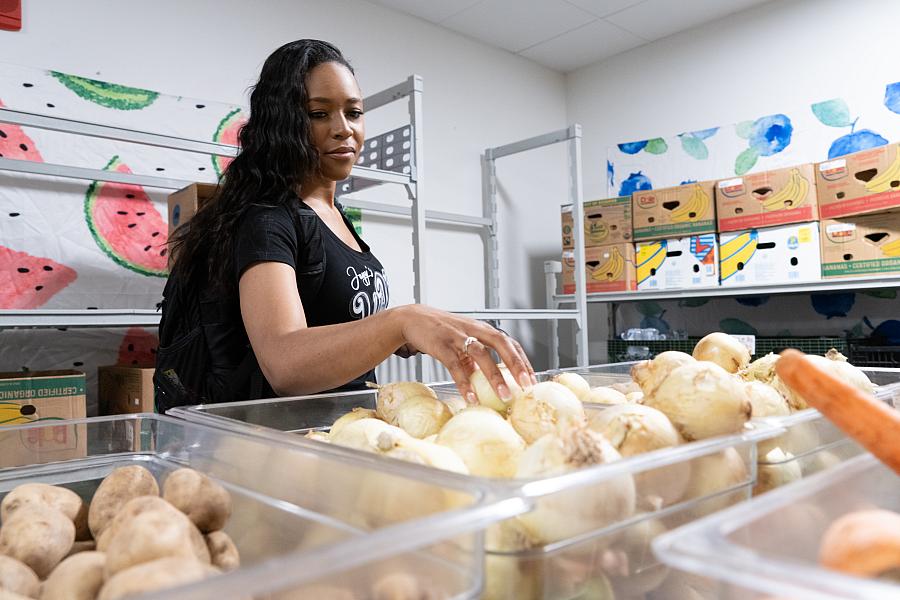
Many college students, especially Black students, are forced to master a network of food insecurity support services to even have a chance to reach graduation.
Photo by Roberta Alvarado
“I literally was living paycheck to paycheck while I was finishing up my [general education] classes,” Dramera says. “The only money I had was the money at the end of the week after driving. And that’s the money that I would only use on groceries and to get me through the next week.”
The impact of food insecurity on college students can lead to poorer physical and psychosocial health, anxiety and depression, lower GPAs and higher dropout rates, and increased student debt.
Dramera relied heavily on a credit card before her boyfriend helped her get out from under the hefty bill.
“I remember using it and spending like $1,000 for groceries,” Dramera says. “The next month I used it to fix my car and things like that. When I’d get my checks I’d have to put my money towards it, but it wouldn’t even count because there would be interest in the end.”
An extra $500 a month means she can wholly resume her plant-based lifestyle.
“I was only eating organic foods until I couldn’t afford it anymore. With our first check, I was able to actually go back to being fully vegan.”
Dramera now visits local farmers markets without fretting over produce prices.
“I’m so grateful and thankful that I just don’t have to worry about it anymore,” she says. “It’s like a breath of fresh air. I feel like for the first time, I finally get to just focus on school. My biggest goal right now is to finish school. I can focus on that and not have to focus on anything else.”
‘Stamping’ Out Hunger
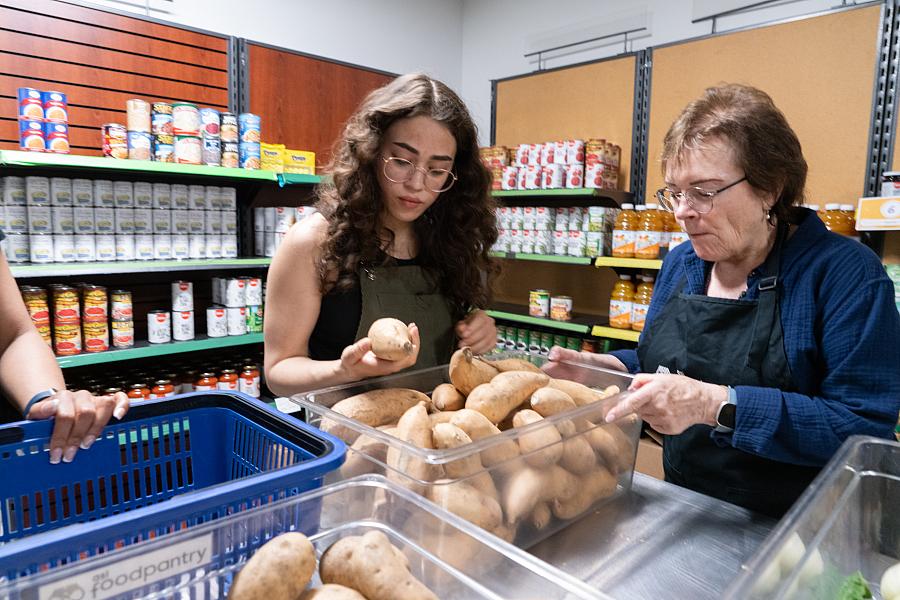
Deja Douglas, 23, has been able to stave off hunger by “shopping” at a campus food pantry.
Photo by Roberta Alvarado
Fellow Hornet Deja Douglas recalls being asked what she planned to do with an extra $500.
“Of course I said groceries,” Douglas says.
The 23-year-old psychology major is just as thankful for the mental support as she is for the monthly check.
“It’s taking away that stress and the fear that can come with not having your needs met,” she says tearfully.
Instability isn’t new to Douglas, who was born in Antioch and later moved to Amador County. Her parents split up and her mother’s drug addiction made holding a job difficult. They moved around a lot and Douglas spent three months in foster care, before her mother got clean and was reunited with her.
“Having food stamps was a really big thing for us,” Douglas says. “Every month we knew that we were going to be able to go to the store and get what we needed and then hold up for as long as we could. Food stamps [day] was a beautiful day.”
Things weren’t so rosy when the vouchers ran out. The adults in her life started taking what they needed.
“Stealing is not good, but they at least got tortillas and cheese,” Douglas says. “That’s how we had food.”
Being in college improved her circumstances.
“I’m doing really good,” Douglas says. “I learned a lot about how to manage my money and go to the grocery stores and find good deals and prices.”
This past semester, Douglas visited Sac State’s Associated Students Inc. Food Pantry once or twice a week.
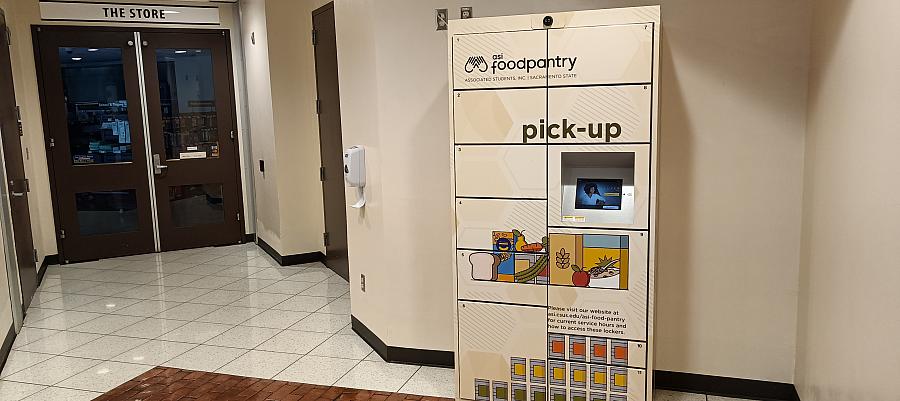
In addition to a food pantry, Sacramento State has a food locker located inside the University Union building, near the bookstore.
Photo by Genoa Barrow
ASI Food Pantry manager Sommer Hayes says roughly 40% of Sac State undergraduate students face food insecurity. Some 100 students a day lined up outside the pantry in 2022. That was a drastic increase from the previous year, when the pantry served an average of 167 students per week.
In partnership with the Yolo Food Bank, UC Davis’ Aggie Compass Basic Needs Center serves as an Eat Well Yolo site, giving out hundreds of pounds of food every week.
Douglas considers it a “privilege and an honor” to have a pantry on her Sac State campus. She wants to see more done though, to make it more accessible, welcoming and normalized for students.
“There’s definitely stigmas,” Douglas says. “Maybe there’s just another way we can do it where people feel less afraid to get that assistance, because we’re all struggling. We’re all going to school here and some of us have more food needs than others. I think we’re all hungry.”
Barely Making It
Prior to taking the helm at Sac State in 2023, Dr. Wood co-authored the 2017 report “Struggling to Survive: Striving to Succeed: Food and Housing Insecurities in the Community College.” A total of 2,647 California students were surveyed using a scale measuring stressful life events. “Being unsure about where your next meal will come from and unsure where you’ll live and sleep are all too frequent experiences in the lives of college students,” reads a summary.
Students facing food insecurity were found less likely to be on track to achieve their academic goals and more likely to express their intention to drop out. Researchers also found that these students are less likely to perceive college as being worthwhile, they don’t feel welcome to engage with faculty and they don’t feel connected to student services or see those services as being effective in addressing their needs. The survey also showed students of color are 36% more likely than white students to have experienced food scarcity as children.
Many students suffer in silence, but Dramera remembers the time her hunger made itself known in a very public way. Even now, she laughs to cover up the embarrassment she felt.
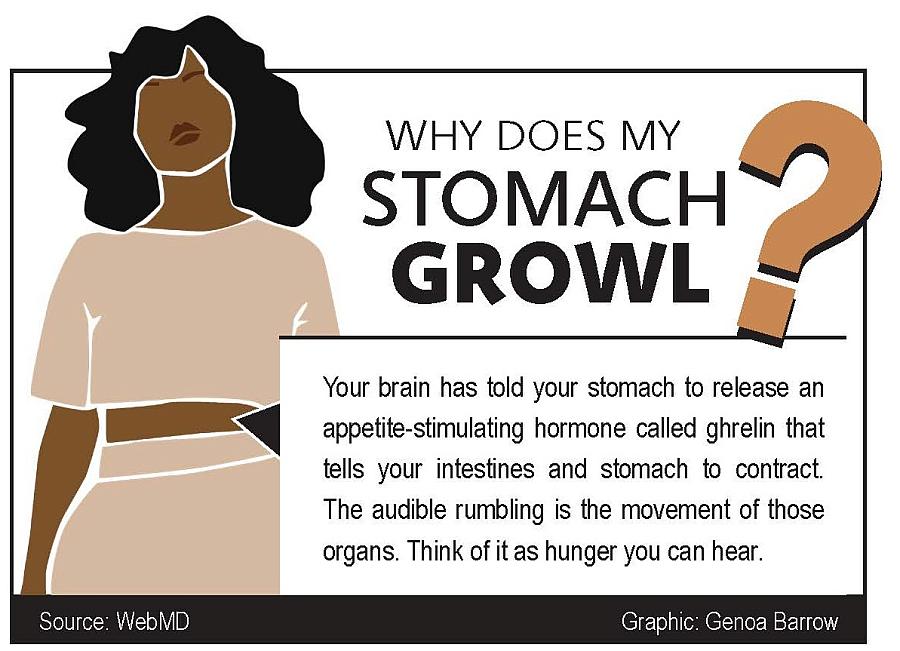
“My stomach was growling a lot in the class,” she recalls. “It was pretty loud.”
Dramera had rushed out to make it to class on time and didn’t grab anything to eat before leaving. Truth is, payday hadn’t come and there wasn’t much to grab.
Hearing the telltale signs of an empty stomach, a student seated behind Dramera reached into his backpack and handed her a granola bar. Her first instinct was to decline his offer, but she quickly thought better of it. On another belly-rumbling occasion, a fellow classmate gave her a piece of fruit.
“To have people who just notice you and care and have an ounce of loving spirit to offer something to a stranger. I think it’s beautiful. I don’t take people like that for granted,” Dramera says.
“Usually we’re just kind of just eating whatever we could get or find or receive from people,” she adds. “I remember eating ramen all the time.”
A meatless diet saves her money, but eating healthy can be costly.
During a time when she wasn’t working, Dramera applied for food stamps and was given just $27. Frustrated, the tearful student asked the eligibility worker what she was supposed to do with that amount.
“He said, ‘You can go to Dollar Tree and get some bread and peanut butter and jelly.’”
She took his advice, coupled with what she’d already learned from her mother, a health educator, and made it work.
“I stretched the $27 for two weeks,” she says.
Also standing in the gap is the Guardian Scholars Program’s own free food coffers, which Dramera has raided on occasion. “They have veggies, they have cereal and pasta sauce. I lived on spaghetti that they had for a week when I was financially unstable.”
Pantries are also feeding campus faculty and staff who live at or near the poverty level and face food insecurity. During his off time, ARC instructor Jordan McGowan leads community food distributions through his Neighbor Program Inc. McGowan sometimes has to grab a box for his own family.
“Food is expensive,” McGowan says. “Right now, I’m a full-time professor at ARC, but next semester, I’m going to lose all my classes because I’m adjunct and part time.”
Capital Gains
College hunger has garnered statewide attention. Senate Bill 641, the CalFresh for College Students Act, authored by Senator Nancy Skinner, passed in 2022.
Several legislative bills are now circulating. Assemblymember Isaac Bryan (D-Los Angeles) co-authored Assembly Bill 274, which seeks to simplify CalWORKs and CalFresh eligibility for college students by exempting grants, awards, scholarships, loans, and fellowship benefits provided for educational purposes from income consideration.
AB 2150, co-authored by Joaquin Arambula (D-Fresno), would require the California Department of Social Services to develop trainings and have agency liaisons to improve enrollment in public benefits programs for college students. Assemblymember Eloise Gomez Reyes authored AB 2033, also known as the EBT Access for Student Empowerment (EASE) Act, which would require each California community college to have at least one store that accepts EBT cards.
Stacia Hill Levenfeld, CEO of the California Food Bank Association, says AB 2150 would create a workgroup of higher education liaisons, advocates and stakeholders that would meet regularly to improve college student access to public benefits such as CalFresh. The bill was held in the Assembly appropriations committee in May and won’t advance further this year. While a similar bill, AB 870, did not pass in 2023, Hill Levenfeld says failure is not an option.
“We find that some schools are really far down the path and others aren’t as far,” she says. “We really want the network talking about how they can easily implement programs. It doesn’t have to be a burden and this is a population that needs to be served.”
Douglas puts it all in perspective: “It’s not just a food issue,” she says. “It’s a money issue. It’s not that we don’t have enough food in this country. There’s not enough money to purchase that food. With inflation it’s only going to get worse.”
EDITOR’S NOTE: This article is part of OBSERVER Senior Staff Writer Genoa Barrow’s four-part series, “Hunger Pains,” focusing on food insecurity in the Black community. The series is being supported by the USC Annenberg Center for Health Journalism and is part of “Healing California,” a yearlong reporting Ethnic Media Collaborative venture with print, online and broadcast outlets across California. The OBSERVER is among the collaborative’s inaugural participants.

